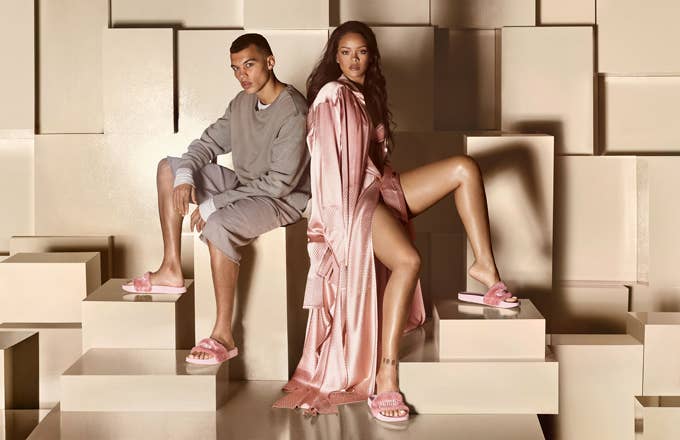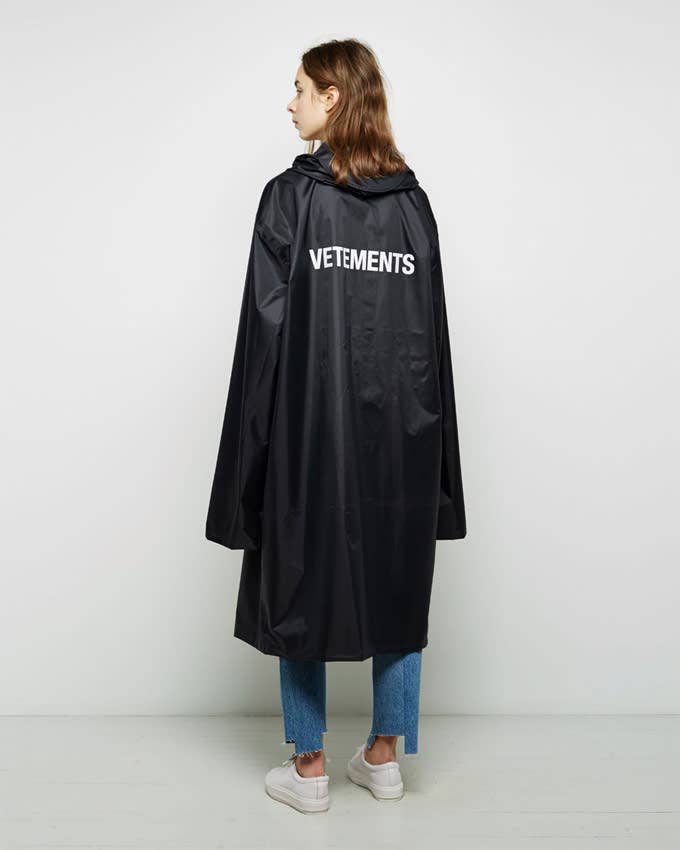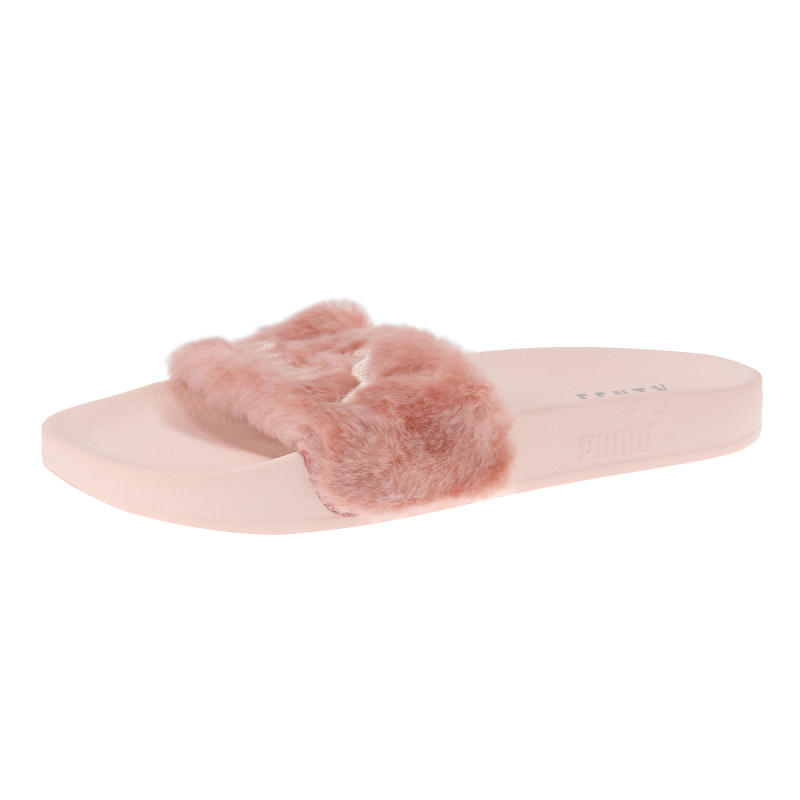
This past January, Dover Street Market New York announced that it opened the first shop for Parisian label Vetements in the world. The space—on the 7th floor of DSM, separated from the Supreme section by curtains on black rods—had three racks packed with black Vetements oversized raincoats.
By the following day, the Vetements shop was completely empty. During a media tour of the new spaces and installations at Dover Street Market, the publicist on hand laughed when we walked up to the curtains. “This doesn’t normally look like this,” she said to me. “There were jackets here, but they sold out the day of.”
Vetements, since launching in 2014, has become the new “it” brand in fashion. Its designs—whether a T-shirt, a hoodie that can be flipped backwards, or finger gloves—often create frenzy. Editors want it. Street style stars and bloggers want it. Celebrities want it. But would a label like Vetements be one of the most talked about in the industry without the hype? Or is selling out the new measure of success for brands?
By definition, the word “success” means “the attainment of popularity or profit” (word to Google). In fashion, brands become successful by designing full collections or items of clothing that are well-made and/or make powerful statements. Sometimes, it’s a matter of introducing new garments and silhouettes that change the scope of the industry, as Yves Saint Laurent did with the “trapeze dress” for his first Dior collection.
But, perhaps there’s more at play today.

One of the explicit ways to determine whether or not a brand is successful is by looking at its sales. But The Cut’s fashion news editor, Véronique Hyland, says hype certainly also helps. "Collaborations created that because people wanted to have the 'it' item from the collaboration. But I think now you sort of see that happening with non-collaborations. People will just pick something up if it's limited edition or sold for a limited time only."
Hype isn’t historically a new concept—the idea of an “it bag” for women has been around for decades, for instance—but consumers today are paying more attention to it than ever. Hyland, insists that, as an editor, she evaluates a collection or label based on how the clothing stands or what statement it’s making. But, she says, “from a customer standpoint, people are maybe looking at things on an item basis: the sell-out item, the hot item.”
“I think it’s a question of what’s exciting and what feels in the moment,” Hyland adds. “That’s just sort of the way trend-driven industries work.”
The attention is a direct result of the Internet. “I do think hype is generated much more easily through the Internet,” says Business Insider retail reporter Mallory Schlossberg. “I think that’s something we’ve seen through social media.” On April 22, Rihanna released her much-teased and highly-anticipated Puma fur slides. The slides sold out in 30 minutes and resulted in reactions from fans that stretched from distraught to blessed (if they were lucky enough to buy a pair). The slides were deemed a success.
It’s important, however, to note that a collection can sell out simply because supply does not meet the demand. Supreme, which always sells out, makes its products in limited quantities. So does Vetements. "In order to make people want something, you need to make scarcity," Vetements CEO Guram Gvasalia told AFP. "The real definition of luxury is something that is scarce. Every single piece in our collection is going to be a limited item... We don't restock and we don't reproduce -- if it's sold out, it's sold out."
“[Brands] know what they’re doing when they’re creating the frenzy,” explains Ryan Williams, assistant buyer at Toronto menswear shop Nomad. “If [an item of clothing] sells out, it means it was desirable. But the fact of the matter is, some of the product can be good, some may not be.” According to Ryan, he prefers to focus on the brand’s overall vision and its collections instead of hype when deciding what brands to stock at Nomad.

So, while hype and sales can help propel brands to success, those two simply aren’t enough. “I think at the end of the day, what will make a brand ‘successful’ long term is whether or not it has an ideology that people agree with. Does the product hold up over time? Do people like the product? Does it fit well? Is it high quality and do people feel that they’re getting what they’re paying for?” explains Schlossberg.
The Cut’s Hyland agrees, and points to the importance of design. “I think there has to be that kind of element in the design where [brands] are like, ‘We’re making this covetable, even though you didn’t think it could be covetable.’” She refers to Vetements’ DHL T-shirt or Céline’s fur-lined iteration of the Birkenstock sandals presented during the label’s Spring 2013 runway show. “That was something that was clever in the sense that it was sort of anticipating a need that people didn’t really know they had.”
She continues: “The Velvet Underground’s first album didn’t sell well, but everyone who bought it started a band, and that’s kind of what I think of for fashion. Some of these brands can be incredibly influential even if, in the moment, they’re not seen.”

